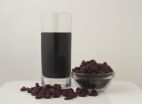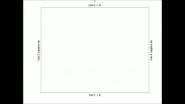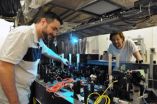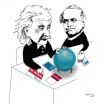(Press-News.org) Troy, N.Y. – Research published today in the Proceedings of the National Academy of Sciences makes it possible to predict how subjecting metals to severe pressure can lower their electrical resistance, a finding that could have applications in computer chips and other materials that could benefit from specific electrical resistance.
The semiconductor industry has long manipulated materials like silicon through the use of pressure, a strategy known as "strain engineering," to improve the performance of transistors. But as the speed of transistors has increased, the limited speed of interconnects – the metal wiring between transistors – has become a barrier to increased computer chip speed. The published research paper, "Pressure Enabled Phonon Engineering in Metals," opens the door to a new variant of strain engineering that can be applied to the metal interconnects, and other materials used to conduct or insulate electricity.
"We looked at a fundamental physical property, the resistivity of a metal, and show that if you pressurize these metals, resistivity decreases. And not only that, we show that the decrease is specific to different materials – aluminum will show one decrease, but copper shows another decrease," said Nicholas Lanzillo, a doctoral candidate at Rensselaer Polytechnic Institute and lead author on the study. "This paper explains why different materials see different decreases in these fundamental properties under pressure."
The research involved theoretical predictions, use of a supercomputer, and experimentation with equipment capable of exerting pressures up to 40,000 atmospheres (nearly 600,000 pounds per square inch). It was made possible through a collaboration between three Rensselaer professors – Saroj Nayak, a professor of physics, applied physics, and astronomy; Morris Washington, associate director of the Center for Materials, Devices, and Integrated Systems and professor of practice of physics, applied physics, and astronomy; and E. Bruce Watson, Institute Professor of Science, and professor of earth and environmental sciences and of materials science and engineering – with a diverse mix of disciplinary backgrounds and skill sets. Jay Thomas, a senior research scientist in Watson's lab, was primarily responsible for designing the complex experiments detailed in the paper.
When an electrical current is applied to metal, electrons travel through a lattice structure formed by the individual metal atoms, carrying the current along the wiring. But as an electron travels, it is impeded by the normal collective vibration of atoms in the lattice, which is one of the factors that leads to electrical resistance. In physics, the vibration is called phonon, and the resistance it creates by coupling with electrons is known as electron-phonon coupling, a quantum mechanical feature that amplifies strongly at the atomic scale.
Lanzillo and Nayak, his doctoral adviser, said earlier research using the Center for Computational Innovations – the Rensselaer supercomputer – showed that electron phonon coupling varies depending on the scale of the wiring: nanoscale wire has typically higher resistance than ordinary size, or "bulk," wiring.
"Our goal was to understand what limits the resistivity, what accounts for the different resistance at the atomic scale," said Nayak. "Our earlier findings showed that sometimes the resistance of the same metal in bulk and at the atomic scale could change by a factor of 10. That's a big number in terms of resistivity."
The researchers wanted to conduct experiments to confirm their findings, but doing so would have required making atomic-scale wires, and measuring the electron-phonon coupling as a current passed through the wire, both difficult tasks. Then they saw an alternative, based on the observation that atoms were closer together in the atomic scale lattice than in bulk lattice.
"We theorized that if we compress the bulk wire, we might be able to create a condition where the atoms are closer to each other, to mimic the conditions at the atomic scale," said Nayak.
They approached Watson and Washington to execute an experiment to test their finding.
Washington and Nayak have long collaborated through the New York State Interconnect Focus Center at Rensselaer, which researches new material systems for the next generation of interconnects in semiconductor integrated circuits with a strong interest in interconnects at dimensions of less than 20 nanometers. Existing experimental data indicated that the resistivity of copper – the current preferred interconnect material – increases as the wiring size dips below 50 nanometers. One goal of the center is to suggest materials and structures for integrated circuit interconnects smaller than 20 nanometers, which often involves fabricating and characterizing experimental thin film structures with the resources of the Rensselaer Micro and Nano Fabrication Clean Room. With this background, Washington was critical to coordinating the experimental research.
To pressurize the metals, the group turned to Watson, a geochemist who routinely subjects materials to enormous pressures to simulate conditions in the depths of the Earth. Watson had never experimented with the electrical properties of metal wires under pressure – a process that posed a number of technical challenges. Nevertheless, he was intrigued by the theoretical findings, and he and Thomas worked together to design the high-pressure experiments that provided information on the electrical resistivity of aluminum and copper at pressures up to 20,000 atmospheres.
Working together, the team was able to demonstrate that the theoretical calculations were correct.
"The experimental results were vital to the study because they confirmed that Saroj and Nick's quantum mechanical calculations are accurate – their theory of electron-phonon coupling was validated," said Watson. "And I think we would all argue that theory backed up by experimental confirmation makes the best science."
The authors said the research offers a new and exciting capability to predict the response of the resistivity to pressure through computer simulations. The research demonstrates that changes in resistivity can be achieved in thin film nanowires by using strain in combination with existing semiconductor wafer fabrication techniques and material. Because of this work, the physical properties and performance of a large number of metals can be further explored in a computer, saving time and expense of wafer fabrication runs.
Lanzillo said the results are a complete package.
"We can make this prediction with a computer simulation but it's much more salient if we can get experimental confirmation," said Lanzillo. "If we can go to a lab and actually take a block of aluminum and a block of copper and pressurize them and measure the resistivity. And that's what we did. We made the theoretical prediction, and then our friends and colleagues in experiment are able to verify it in the lab and get quantitatively accurate results in both."
INFORMATION:
Funding for the research was partially supported by the National Science Foundation Integrative Graduate Education in Research and Traineeship (IGERT) Fellowship, Grant No. 0333314, as well as the Interconnect Focus Center (MARCO program) of New York state. Computing resources provided by the Center for Computational Innovations at Rensselaer, partly funded by the state of New York.
Rensselaer researchers predict the electrical response of metals to extreme pressures
Findings published in the Proceedings of the National Academy of Sciences could have applications in computer chip design
2014-06-02
ELSE PRESS RELEASES FROM THIS DATE:
Study shows impact of tart cherries on inflammation and oxidative stress after cycling
2014-06-02
Cyclists who drank Montmorency tart cherry juice concentrate before a three-day simulated race experienced less inflammation and oxidative stress compared to those who drank another beverage, according to a recent U.K. study published in the journal Nutrients.
A research team led by Dr. Glyn Howatson with PhD student Phillip Bell at Northumbria University gave 16 well-trained, male cyclists about 1 ounce (30 ml) of Montmorency tart cherry juice concentrate mixed with water (equivalent to 90 whole Montmorency tart cherries per serving), or a calorie-matched placebo, twice ...
Transition to ICD-10 may mean financial, data loss for pediatricians
2014-06-02
Pediatricians may lose money or data during the mandated conversion from the current International Classification of Diseases (ICD) to its new version, according to University of Illinois at Chicago researchers.
The study is published in Pediatrics.
The ICD codes are used in managing all aspects of health care, from insurance reimbursement to staffing decisions to supply procurement to research. Pediatricians use a variety of ICD-9 codes from many different categories, including well child care, infectious diseases, injury and genetic disorders.
The ICD-10-CM, scheduled ...
Here come the 'brobots'
2014-06-02
WASHINGTON D.C. June 2, 2014 -- A team of researchers at the University of Twente (Netherlands) and German University in Cairo (Egypt) has developed sperm-inspired microrobots, which can be controlled by oscillating weak magnetic fields.
Described in a cover article in the journal Applied Physics Letters, which is from AIP Publishing, the 322 micron-long robots consist solely of a head coated in a thick cobalt-nickel layer and an uncoated tail. When the robot is subjected to an oscillating field of less than five millitesla – about the strength of a decorative refrigerator ...
MRI-guided laser procedure provides alternative to epilepsy surgery
2014-06-02
May 30, 2014 – For patients with mesial temporal lobe epilepsy (MTLE) that can't be controlled by medications, a minimally invasive laser procedure performed under MRI guidance provides a safe and effective alternative to surgery, suggests a study in the June issue of Neurosurgery , official journal of the Congress of Neurological Surgeons . The journal is published by Lippincott Williams & Wilkins , a part of Wolters Kluwer Health.
"Real-time magnetic resonance-guided stereotactic laser amygdalohippocampotomy (SLAH) is a technically novel, safe and effective alternative ...
University of Toronto physicists take quantum leap toward ultra-precise measurement
2014-06-02
TORONTO, ON – For the first time, physicists at the University of Toronto (U of T) have overcome a major challenge in the science of measurement using quantum mechanics. Their work paves the way for great advances in using quantum states to enable the next generation of ultra-precise measurement technologies.
"We've been able to conduct measurements using photons – individual particles of light – at a resolution unattainable according to classical physics," says Lee Rozema, a Ph.D. candidate in Professor Aephraim Steinberg's quantum optics research group in U of T's Department ...
One in 4 children with leukemia not taking maintenance medication, study shows
2014-06-02
(WASHINGTON, June 2, 2014) – An estimated 25 percent of children in remission from acute lymphocytic leukemia (ALL) are missing too many doses of an essential maintenance medication that minimizes their risk of relapse, according to a study published online today in Blood, the Journal of the American Society of Hematology. The study also reports that maintenance medication adherence was lower in African American and Asian children in remission from ALL than in non-Hispanic white children, with 46 percent of African Americans and 28 percent of Asians not taking enough to ...
No apparent link between chronic cerebrospinal venous insufficiency and MS
2014-06-02
There appears to be no link between chronic cerebrospinal venous insufficiency and multiple sclerosis (MS), according to new research published in CMAJ (Canadian Medical Association Journal).
In 2009, Dr. Paolo Zamboni postulated that chronic cerebrospinal venous insufficiency is a cause of MS, an inflammatory disease of the central nervous system that affects people in northern climates in particular. Published evidence has not been able to find a link to MS, and no one has been able replicate his findings. Several recent studies have shown an association between ultrasound-diagnosed ...
Fishing boats are powerful seabird magnets
2014-06-02
It's no surprise that seabirds are attracted to fishing boats, and especially to the abundance of discards that find their way back into the ocean. But researchers reporting in the Cell Press journal Current Biology on June 2 now find that those boats influence bird behavior over much longer distances than scientists had expected.
Specifically, each boat creates a "halo of influence" across an area measuring about 22 kilometers. That's 13.6 miles—a distance a little longer than a half marathon.
"While we knew that seabirds, including gannets, regularly followed fishing ...
Success for scientists in the academic job market is highly predictable
2014-06-02
The number of scientists in training vastly exceeds the number that will successfully land a faculty position at an academic institution. Now, researchers report in the Cell Press journal Current Biology on June 2 that an individual scientist's chances are very predictable based solely on his or her publication record.
The likelihood of getting that faculty job depends mostly on the number of publications, the impact factor of the journals in which those papers are published, and the number of papers that receive more citations than would be expected based on the journal ...
Gannet sat nav reveals impact of fishing vessels
2014-06-02
Fishing vessels have a far bigger ecological footprint than previously thought, according to research which tracked the movement and behaviour of seabirds using GPS devices.
A team of scientists led by the University of Exeter discovered that northern gannets change their behaviour in response to the presence of large vessels such as trawlers, suggesting each boat can significantly influence the distribution and foraging patterns of these and other marine predators.
Northern gannets (Morus bassanus) are known to feed on discards from fishing vessels as well as diving ...
LAST 30 PRESS RELEASES:
Norbert Holtkamp appointed director of Fermi National Accelerator Laboratory
New agentic AI platform accelerates advanced optics design
Biologists discover neurons use physical signals — not electricity — to stabilize communication
Researchers discover that a hormone can access the brain by hitchhiking
University of Oklahoma researcher awarded funding to pursue AI-powered material design
Exploring how the visual system recovers following injury
Support for parents with infants at pediatric check-ups leads to better reading and math skills in elementary school
Kids’ behavioral health is a growing share of family health costs
Day & night: Cancer disrupts the brain’s natural rhythm
COVID-19 vaccination significantly reduces risk to pregnant women and baby
The role of vaccination in maternal and perinatal outcomes associated with COVID-19 in pregnancy
Mayo Clinic smartwatch system helps parents shorten and defuse children's severe tantrums early
Behavioral health spending spikes to 40% of all children’s health expenditures, nearly doubling in a decade
Digital cognitive behavioral treatment for generalized anxiety disorder
Expenditures for pediatric behavioral health care over time and estimated family financial burden
Air conditioning in nursing homes and mortality during extreme heat
The Alps to lose a record number of glaciers in the next decade
What makes a good proton conductor?
New science reporting guide published for journalists in Bulgaria
New international study reveals major survival gaps among children with cancer
New science reporting guide published for journalists in Turkey
Scientists develop a smarter mRNA therapy that knows which cells to target
Neuroanatomy-informed brain–machine hybrid intelligence for robust acoustic target detection
Eight SwRI hydrogen projects funded by ENERGYWERX
The Lundquist Institute and its start-up company Vitalex Biosciences Announces Strategic Advancement of Second-Generation fungal Vaccine VXV-01 through Phase 1 Trials under $40 Million Competitive Con
Fine particles in pollution are associated with early signs of autoimmune disease
Review article | Towards a Global Ground-Based Earth Observatory (GGBEO): Leveraging existing systems and networks
Penn and UMich create world’s smallest programmable, autonomous robots
Cleveland researchers launch first major study to address ‘hidden performance killer’ in athletes
To connect across politics, try saying what you oppose
[Press-News.org] Rensselaer researchers predict the electrical response of metals to extreme pressuresFindings published in the Proceedings of the National Academy of Sciences could have applications in computer chip design





